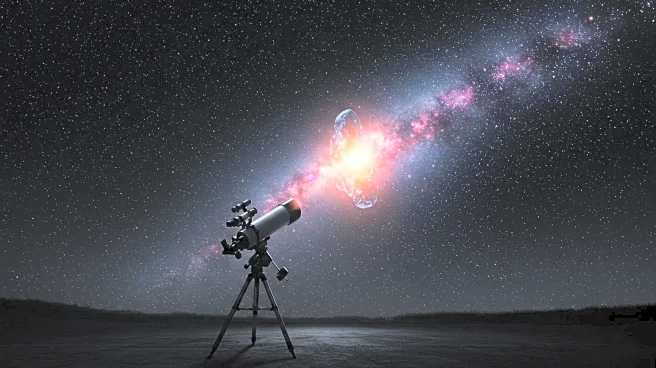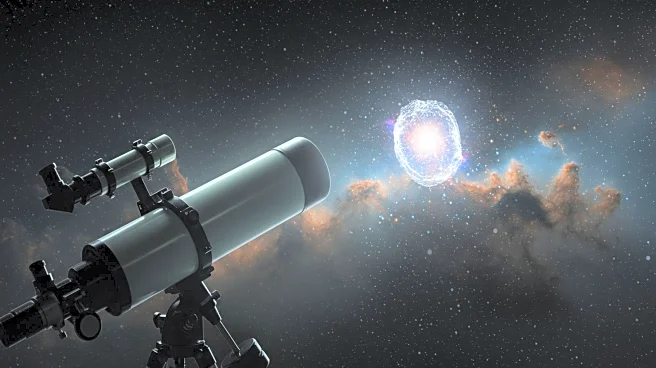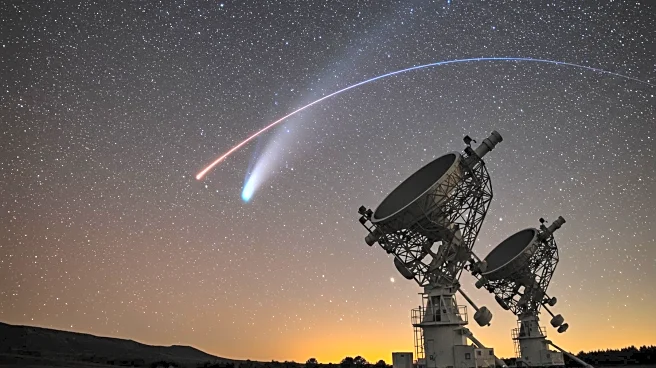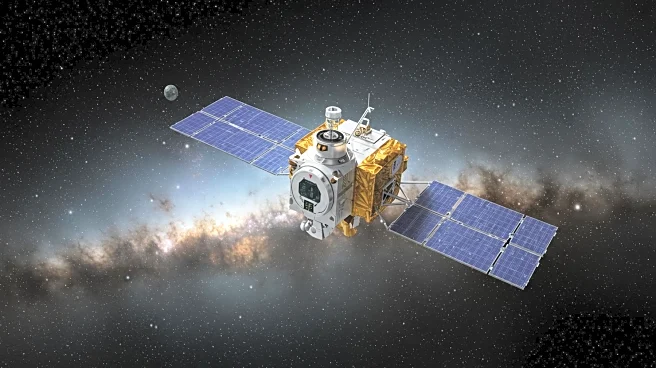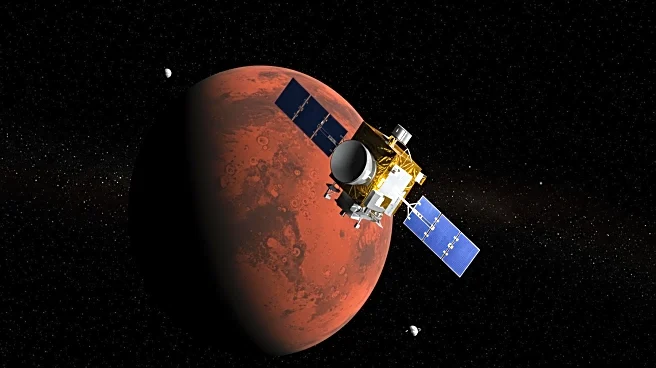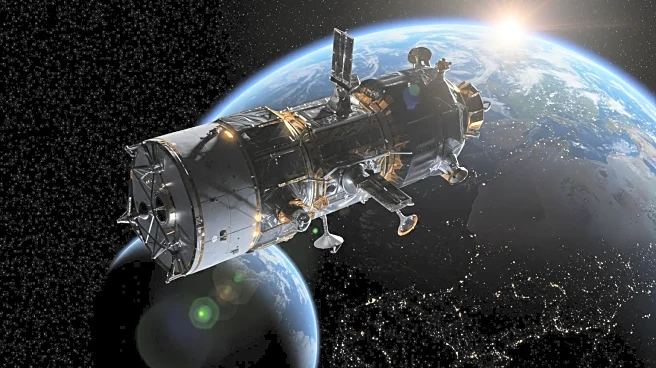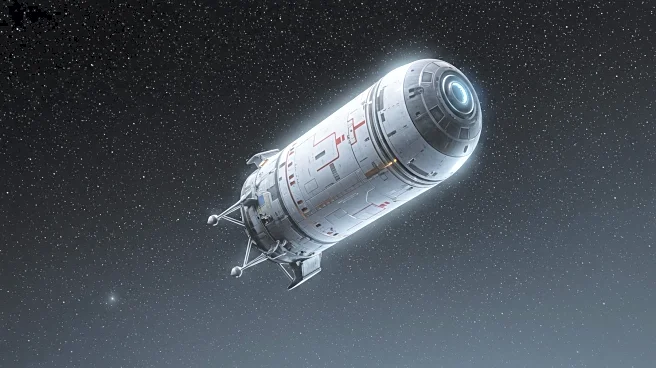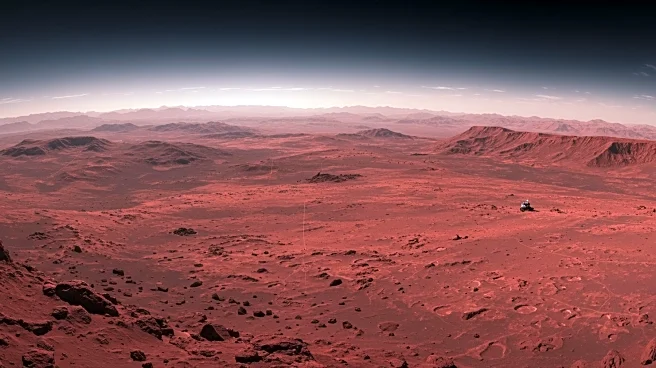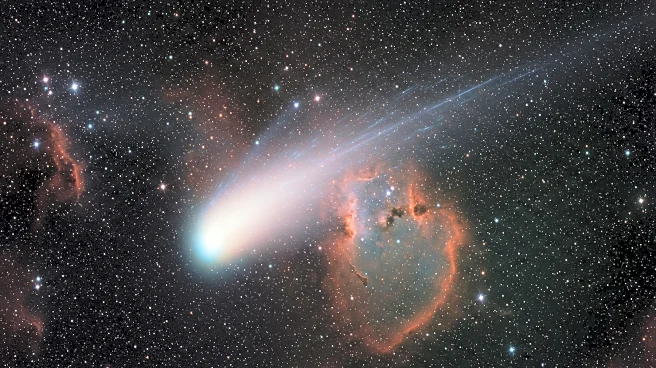What's Happening?
The Hubble Space Telescope has captured images of the interstellar object 3I/ATLAS, revealing a glow of light ahead of its motion towards the Sun. This glow is interpreted as the evaporation of dust from the Sun-facing side of 3I/ATLAS, with no evidence of a cometary tail. The observed steep surface brightness profile suggests a radial power-law slope of -4, which is steeper than typical solar system comets. Researchers, including Avi Loeb, propose that the dust outflow around 3I/ATLAS may be illuminated by a central source, potentially indicating that the object generates its own light. This hypothesis challenges the reflection model, which would require a much larger diameter for 3I/ATLAS than is feasible given the limited rocky material in interstellar space.
Why It's Important?
The findings regarding 3I/ATLAS could have significant implications for our understanding of interstellar objects and their properties. If 3I/ATLAS generates its own light, it may be much smaller than previously thought, aligning it more closely with other known interstellar objects like 1I/`Oumuamua and 2I/Borisov. This discovery could influence future research and observation strategies, as scientists seek to understand the nature and origin of such objects. The possibility of a technological origin for 3I/ATLAS, such as a spacecraft powered by nuclear energy, opens up intriguing questions about the presence of advanced technology in space.
What's Next?
3I/ATLAS is expected to pass within 28.96 million kilometers of Mars on October 3, 2025, providing an opportunity for further observation using the HiRISE camera on the Mars Reconnaissance Orbiter. This could yield new data to help determine the nature of 3I/ATLAS. Observing the object from Earth will be challenging due to its proximity to the Sun in the sky. Continued data collection will be crucial in understanding whether 3I/ATLAS is a natural or potentially technological object.
Beyond the Headlines
The study of 3I/ATLAS raises broader questions about the presence of interstellar objects and their potential technological origins. The fine-tuned trajectory of 3I/ATLAS suggests a level of precision that could imply intelligent design. This challenges existing paradigms about the nature of interstellar objects and may prompt further exploration into the possibility of extraterrestrial technology.
